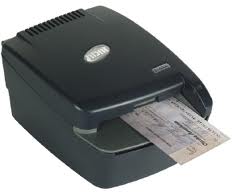MICR Full Form | What is Magnetic Ink Character Recognition
What is the Full Form of MICR?
MICR: Magnetic Ink Character Recognition
The full form of MICR is Magnetic Ink Character Recognition. MICR is a technology that was invented to identify the authenticity and individuality of a document using special ink and characters. The MICR is a convenient and human-friendly pattern recognition system. MICR readers can directly scan and read the information into a data collection device. Hence, the use of MICR technology ensured a more well-organized way of document processing.
Magnetic Ink Character Recognition
Discovery of MICR
Before the invention of the MICR code, the clearance of cheques and documents consumed a lot of time due to its manual processing. Moreover, because of the processing difficulty, the pending number of cheques was increasing day by day. To avoid such a situation, so that documents can't be forged easily, the MICR was discovered.
Origin of the MICR
By the Mid 1950s, the General Electric Computer Laboratory, altogether with the Standard Research Institute, brought the first-ever MICR automized system to process cheques with the E- 13B font system.
In 1957, in France, The CMC-7 font was created by the Groupe Bull, which was later adopted by many European countries.This attempt was very much effective in reducing the manual effort and subtract the chances of any error.
Representation of MICR Code
Generally, the banking industry uses the MICR technology to identify the originality of the documents and disburden the processing and clearance of the cheques and documents. The MICR code is printed on the bottom of cheques and contains the following:
- The first three digits represent the city code
- The next three digits represent the bank code
- The last three digits denote the branch code
Working of MICR
MICR works on two fonts:
MICR font- This is used to read documents and is printed with the magnetic ink prepared by iron oxide.
MICR font-- E- 13B - It is a set of 14 characters, which includes ten decimal digits and some special symbols.
- CMC-7 - It contains a barcode format and is a set synchronized of 15 characters which comprise ten numeric values and five control characters of amount, routing, terminator, internal, and a new character in a similar pattern.
Any one of these fonts is printed on documents that require evidence of authentication magnetic ink or toner are used in the printing of fonts. The magnetic ink or toner is concretely prepared with iron oxide so that reader can capture it speedily.
The documents are made with the formation of waveforms, the MICR reader perceives the characters. Even if the printing has been spoiled or overprinted, the magnetic scanning technology still assures the systematic reading of the document.
Characteristics of MICR cheques/ documents
- Paper standards- The paper used to print MICR cheque must be the CBSI (Clearing Bank Specification 1 or Clearing Bank Standard 1).
- Chemical Sensitivity- It helps to recognize forgery in cheques and documents.
- Security Standards- Various extraordinary features are added to the MICR cheques to raise security measures.
- Magnetic Ink- To avoid falsification, magnetic ink is used.
- Microprints- To increase the security standards, microprints are used.
- Invisible UV Florescent- It is used as a complementary step to avoid falsifying the documents.
Features of MICR
Following are the main features of the MICR Code:
- The reader can read the MICR codes, even if there is a sign or stamp over it.
- It provides error-free work.
- The MICR codes with errors are straight away rejected, and the ink used in the MICR code is of the best quality and expensive, which assures us that the codes are not fake or false.
- It guarantees high-security standards.
Roles of MICR Code in the banking system
In the real world banking system, we can find the applications of MICR code in the following places:
- In banks, this technology is used to authenticate cheques clearing and other such important documents.
- We can find the MICR code placed on the bottom strip of the cheque. It includes various essential details such as the account details, amount to be paid, bank code, and cheque number alongside a control indicator.